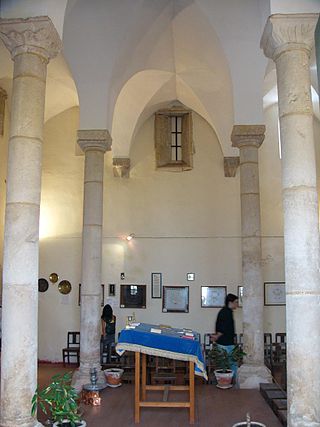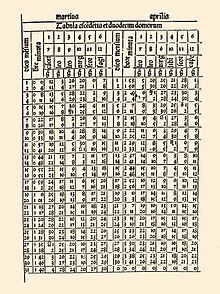
The history of the Kingdom of Portugal from the Illustrious Generation of the early 15th century to the fall of the House of Aviz in the late 16th century has been named the "Portuguese golden age" and the "Portuguese Renaissance". During this period, Portugal was the first European power to begin building a colonial empire as Portuguese sailors and explorers discovered an eastern route to India as well as several Atlantic archipelagos and colonized the African coast and Brazil. They also explored the Indian Ocean and established trading routes throughout most of southern Asia, sending the first direct European maritime trade and diplomatic missions to Ming China and to Japan, at the same time installing trading posts and the most important colony: Portuguese Macau. The Portuguese Renaissance produced a plethora of poets, historians, critics, theologians, and moralists. The Cancioneiro Geral by Garcia de Resende is taken to mark the transition from Old Portuguese to the modern Portuguese language.

Vasco da Gama, 1st Count of Vidigueira, was a Portuguese explorer and the first European to reach India by sea.

Abraham ben Meir Ibn Ezra was one of the most distinguished Jewish biblical commentators and philosophers of the Middle Ages. He was born in Tudela, Taifa of Zaragoza.
Jacob ben Machir ibn Tibbon, of the Ibn Tibbon family, also known as Prophatius, was a Jewish astronomer; born, probably at Marseilles, about 1236; died at Montpellier about 1304. He was a grandson of Samuel ben Judah ibn Tibbon. His Provençal name was Don Profiat Tibbon; the Latin writers called him Profatius Judæus. Jacob occupies a considerable place in the history of astronomy in the Middle Ages. His works, translated into Latin, were quoted by Copernicus, Reinhold, and Clavius. He was also highly reputed as a physician, and, according to Jean Astruc, Ibn Tibbon was regent of the faculty of medicine of Montpellier.
Moshe haDarshan was chief of the yeshiva of Narbonne, and perhaps the founder of Jewish exegetical studies in France. Along with Rashi, his writings are often cited as the first extant writings in Zarphatic, the Judæo-French language.
Hebrew astronomy refers to any astronomy written in Hebrew or by Hebrew speakers, or translated into Hebrew, or written by Jews in Judeo-Arabic. It includes a range of genres from the earliest astronomy and cosmology contained in the Bible, mainly the Tanakh, to Jewish religious works like the Talmud and very technical works.

The history of the Jews in Portugal reaches back over two thousand years and is directly related to Sephardi history, a Jewish ethnic division that represents communities that originated in the Iberian Peninsula. In the sixteenth and seventeenth centuries, Portuguese Jews emigrated to a number of European cities outside Portugal, where they established new Portuguese Jewish communities, including in Hamburg, Antwerp, and the Netherlands,<Swetschinski, Daniel M. Reluctant Cosmopolitans: The Portuguese Jews of Seventeenth-Century Amsterdam. London: Littman Library of Jewish Civilization 2000</ref> which remained connected culturally and economically, in an international commercial network during the seventeenth and eighteenth centuries.
Isaac Israeli ben Joseph or Yitzhak ben Yosef was a Spanish-Jewish astronomer/astrologer who flourished at Toledo in the first half of the fourteenth century.

The Synagogue of Tomar is a well-preserved medieval synagogue in Tomar, Portugal. Along with the Synagogue of Castelo de Vide, it is one of two existing pre-expulsion synagogues in the country. It is located at 73 Rua Dr. Joaquim Jaquinto in Tomar's historic city center. Built in the mid-1400s, the building was active as a synagogue only until 1496, when Jews were expelled from Portugal. It now houses the Abraham Zacuto Portuguese Jewish Museum.
Abraham ben Nathan was a Provençal rabbi and scholar of the 12th-13th centuries.
Isaac ben Samuel of Acre was a Jewish kabbalist who fled to Spain.
Perez ben Elijah of Corbeil was a French tosafist, son of the Talmudist Elijah of Tours. In Talmudic literature he is designated by the abbreviations RaP, RaPaSh, and MaHaRPaSh.
José Vizinho,, was a Portuguese Jew, born in the town of Covilhã, court physician and scientist at the end of the fifteenth century.
João Faras, better known simply as Mestre João, was an astrologer, astronomer, physician and surgeon of King Manuel I of Portugal who accompanied Pedro Álvares Cabral in the discovery of Brazil in 1500, and wrote a famous letter identifying the Southern Cross constellation.

Throughout the early age of exploration, it became increasingly clear that the residents of the Iberian Peninsula were experts at navigation, sailing, and expansion. From Henry the Navigator's first adventures down the African coast to Columbus's fabled expedition resulting in the discovery of the new world, the figures that catalyzed the European appetite for expansion and imperialism heralded from either Spain or Portugal. However, merely a century earlier, nautical travel for most peoples was resigned to keeping within sight of a coastline and very rarely did ships venture out into deeper waters. The period's ships were not able to handle the forces of open ocean travel and the crewmen had neither the ability nor the necessary materials to keep themselves from getting lost. A sailor's ability to travel was dictated by the technology available, and it was not until the late 15th century that the development of the nautical sciences on the Iberian Peninsula allowed for the genesis of long-distance shipping by directly effecting, and leading to the creation of, new tools and techniques relative to navigation. Christopher Columbus’s famous expedition, which crossed the ocean in 1492, was arguably the first contact the civilized world had with the newly discovered continent. Financed and sponsored by Queen Isabella of Spain, his journey would open the door to new trading lanes, imperialist appetites, and the meeting of cultures. Portugal and Spain became the world's foremost leaders in deep water navigation and discovery because of their sailing expertise and the advancement of nautical sciences benefiting their ability to sail further, faster, more accurately, and safer than other states. Vast amounts of precious minerals and lucrative slaves were poured into Iberian treasuries between the late 15th and mid to late 17th centuries because of Spanish and Portuguese domination of Atlantic trade routes. The golden age of Spain was a direct result of the advancements made in navigation technology and the sciences which allowed for deep water sailing.

The Portuguese discovery of the sea route to India was the first recorded trip directly from Europe to the Indian subcontinent, via the Cape of Good Hope. Under the command of Portuguese explorer Vasco da Gama, it was undertaken during the reign of King Manuel I in 1495–1499. Considered one of the most remarkable voyages of the Age of Discovery, it initiated the Portuguese maritime trade at Fort Cochin and other parts of the Indian Ocean, the military presence and settlements of the Portuguese in Goa and Bombay.
Herschell E. Filipowski, also known as Tzvi Hirsh Filipowski, was a Lithuanian-born British Jewish Hebraist, editor, mathematician, linguist and actuary.
Rabbi Isaac ben Eliezer Halevi also known as Rabbi Isaac Segan Lewiyah was an 11th-century French Talmudist, liturgical poet and Tosafist who flourished in Germany.
Samuel Schwarz, or Samuel Szwarc, was a Polish-Portuguese Jewish mining engineer, archaeologist, and historian of the Jewish diaspora, specifically of the Sephardic and crypto-Jewish communities of Portugal and Spain. He is known for his rediscovery of the Jews of Belmonte, Portugal, and restoration of the Synagogue of Tomar.
Portuguese nautical science evolved from the successive expeditions and experience of the Portuguese pilots. It led to a fairly rapid evolution, creating an elite of astronomers, navigators, mathematicians and cartographers. Among them stood Pedro Nunes with studies on how to determine latitude by the stars, and João de Castro, who made important observations of magnetic declination over the entire route around Africa.








